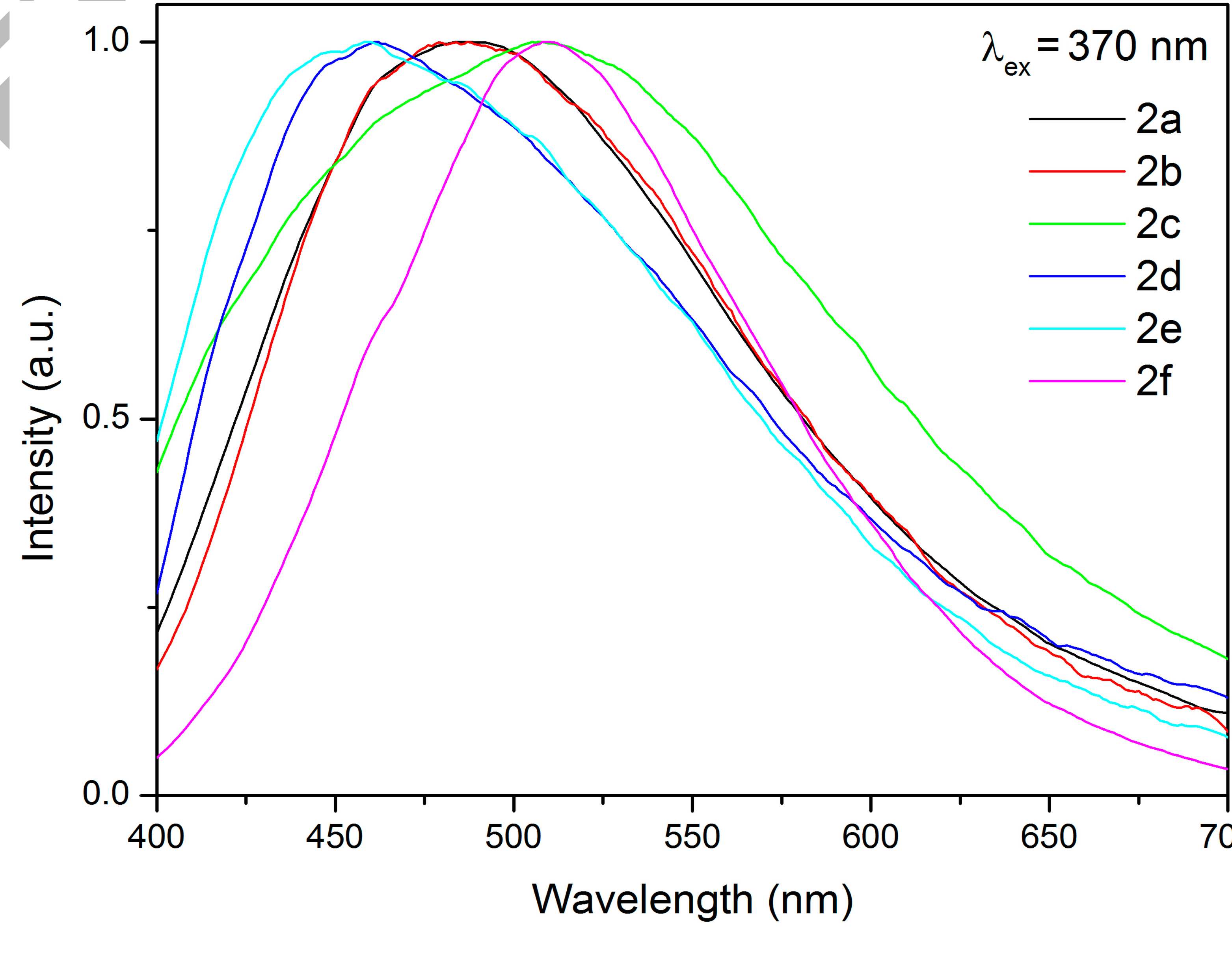Inorganica Chimica Acta Volume 455, Part 1, 30 January 2017, Pages 9–14
Dmitrii S. Bolotin, Mikhail V. Il’in, Ilya E. Kolesnikov, Vitaliy V. Suslonov, Yuri Novozhilov, Oksana Ronzhina, Mikhail Krasavin, Vadim P. Boyarskiy, Renier Koen, Andreas Roodt
Fluorescent (pyrazolyl acetoxime)ZnII complexes: synthetic, structural, and photophysical studies
Inorganica Chimica Acta Volume 455, Part 1, 30 January 2017, Pages 9–14
DOI: 10.1016/j.ica.2016.10.008

Treatment of pyrazolyl acetoximes p-RC6H4{CN(H)NCCH}CH2C(Me)=NOH (R = OMe, H, F, Cl, CN, NO2) with 1 equiv of ZnCl2 leads to the complexes [ZnCl2(p-RC6H4{CN(H)NCCH}CH2C(Me)=NOH)] (81–91%). These species exhibit fluorescence at room temperature with emission maxima in the region 460–509 nm and biexponential relaxation with τ1 = 4.63–8.64 ns and τ2 = 0.482–0.955 ns, respectively. The zinc complexes were characterized by elemental analyses (C, H, N), HRESI-MS, FTIR, 1H and 13C{1H} NMR, and CP-MAS TOSS 13C{1H} NMR. In addition, two zinc complexes and one pyrazolyl acetoxime were studied by single-crystal X-ray diffraction.



